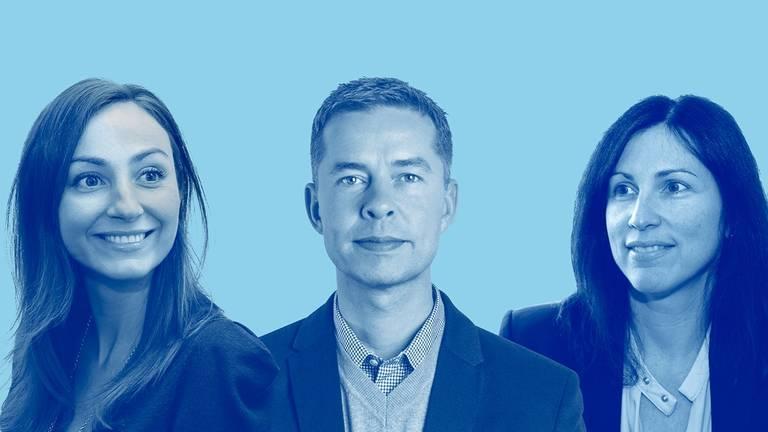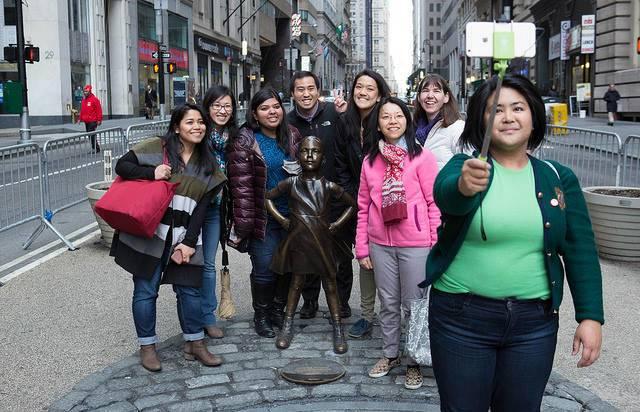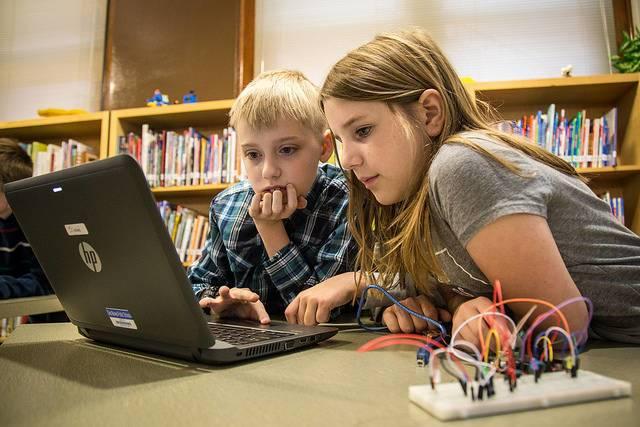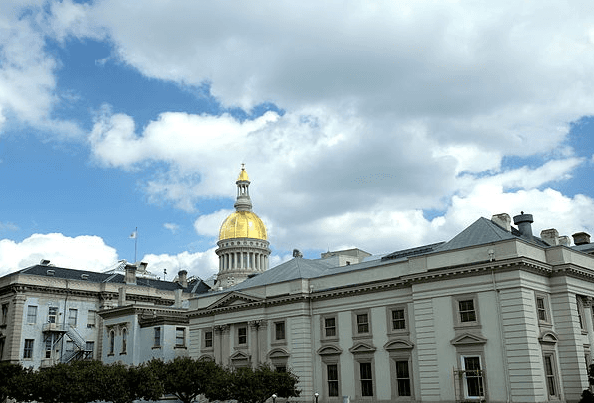Honor Flight Network Offers Veterans One Last Chance to See Memorials for the Wars They Fought In


Companies seeking new ways to work with the local communities in which they conduct business may want to consider a program that celebrates the men and women who have served their country - and often endured experiences the vast majority of us could not even imagine having in our lifetimes.
It was a special early Monday morning for two of my uncles, Edward Kaye (World War II, Marines) and Michael Kilijian (Korean War, Navy). These two veterans, aged 89 and 88, respectively, boarded an Allegiant Air flight from Fresno, California to Baltimore, MD. They were joining 68 veterans, including three women (and one married couple), on an all-expenses paid trip to Washington, D.C. During a whirlwind tour, across the nation's capital, they will visit various sights, including the memorials dedicated to the war theaters at which they performed their wartime service. They will return from their trip tonight.
The costs of their trips are paid entirely by the Honor Flight Network, which since 2005 has been sending World War II, Korean War and now, more Vietnam War veterans to D.C. so they can share memories with other veterans from across the U.S. “Can you believe it? I don’t have to pay for a thing!” Edward (“Eddie”) reminded me several times in the run up to his departure yesterday morning.
Both Eddie and Michael applied for the Honor Flight program earlier this year. The generosity of both private citizens and businesses meant their wait to have this experience was not too long.
And for the vast majority of these veterans, an Honor Flight is a blessing, as many U.S. veterans from the 20th-century wars either lack the financial means, or physical ability, to visit Washington D.C. and see the city’s memorials on their own. In 2004, around the time the World War II Memorial was completed, Earl Morse, a physician assistant and former Air Force Captain, saw the need to have a program to allow these war veterans to have such an experience. The first Honor Flights were on small planes flown by volunteer pilots; since then, the program has expanded rapidly.
The Honor Flight Network includes over 100 local hubs across the U.S. that in turn coordinate with regional businesses and community groups to raise funds for these trips.
National sponsors of the Honor Flight network includes Southwest Airlines, Hilton and Breitling. Here in the San Joaquin Valley, local sponsors include the supermarket chain Food4Less, which at yesterday’s departure ceremony at Fresno/Yosemite International Airport announced it donated $28,000 for this trip. The efforts of the national and local Honor Flight groups are complimented by other local organizations in the Baltimore-Washington region, including those who recruit citizens to greet and cheer the veterans upon their arrival at the Baltimore or greater Washington area airports.
Time is of the essence, as the Honor Flight Network estimates about 640 World War II veterans pass away daily. Now almost all of them are in the nineties, with Eddie among the few exceptions as he enlisted during the waning days of that war. Most chapters prioritize World War II veterans, though Korean War vets are also given priority to participate in these trips as many are well into their mid- to late eighties. Terminally ill veterans are also moved higher in the queue.
These veterans do not go alone: each of them is assigned a “guardian,” who travels with them so that they can tend to their needs during the duration of the quick three-day, two-night trip that includes stops across D.C. and Arlington, Virginia. Each contingent of veterans also includes three nurses and a doctor.
The enthusiasm at the airport departure hall was contagious, and for the veterans, the experience roared off to a great start as the local Honor Flight Network chapter operated as a well-oiled machine. Check-in was simplified, professional photos were taken, and local television stations had sent reporters to cover the departure. A bugle reveille announced the flight's boarding through a dedicated Transportation Security Administration (TSA) line, local officials gave words of thanks, and then, a sea of red Honor Flight jackets, caps and duffle bags made its way through the concourse. “Off on a trip of a lifetime,” said Michael, a retired teacher and part-time actor, as he doffed his cap for what will surely rank among the most rewarding 48 hours in recent memory.
Image credit: Leon Kaye
Landsec Leads the Way with Science-Based Targets


By Tom Idle
The low-carbon fuel cell installed at 20 Fenchurch Street – London’s ‘Walkie Talkie’ building – cost £4 million, but contributes 7% of the entire building’s electricity needs. Landsec are also committed to improving the amount of onsite renewable technology with a new target to achieve 3 MW capacity by 2030. Current capacity has doubled to 1.4 MW this summer with their largest installation to date, a 785 kWp solar PV system at White Rose Shopping Centre in Leeds. The system provides 20% of all landlord power, reducing costs for customers and increasing the asset’s resilience, and has become the largest of its kind in the UK.
Elsewhere, site specific energy reduction assessments continue to find more energy reduction opportunities. The 65 projects agreed last year cost around £2.4 million, but will save customers 7.7m kWh of energy and £877,000 a year in reduced energy bills, with a ROI of under 3 years.
This year, more projects have been identified across the portfolio – projects that will “continue to nudge the dial,” says Byrne. But it is the other more innovative “unknowns” that offer the step change needed for a business like Landsec, he says. “We need to be trialling new technologies and using new models.”
Adopting a bold, science-based target is a move that has had a much bigger impact than first realised, he adds, transforming energy management programmes, which rather than purely focus on operational activities are much more strategic. There is now a more stringent set of requirements for making sure new developments are more sustainable, and a new Responsible Property Investment Policy demands a consideration of sustainability when acquiring new assets, meaning carbon, as well as costs, are formally considered by the Investment Committee.
“Our staff have really got behind it too,” adds Kate Attwooll, Sustainability Executive “We have a long history of creating jobs and opportunities and our people are very passionate about that. But things like energy efficiency have always been seen as a bit too tech-y to really bring our teams together. But that’s changing. We have new training programmes to make sure that everybody knows sustainability matters.” Group-wide KPIs focused on energy management have certainly helped to focus the mind, especially when performance determines bonuses – not only for the CEO and board, but for junior execs too.
The 13.2% reduction in energy intensity achieved across Landsec’s portfolio has seen tenants avoiding energy and carbon costs of £2.9m, when compared to 2013/14, every year. Meanwhile, new developments are increasingly being marketed using their efficiency and wellbeing credentials. The Zig Zag development, featured natural light levels, ventilation, renewable energy and rainwater harvesting, and was billed as “the thoughtful building,”
And ultimately, Landsec’s renewed focus on climate change is about risk mitigation, encouraging innovation along the supply chain, collaborating with partners in new and interesting ways and building a brand strength that will continue to make the business an employer and landlord of choice. “Sustainability is about ensuring that Landsec is in existence, and healthy, in five, ten and 20 years time,” says Robert Noel, the company’s Chief Executive. “We must anticipate the changing requirements of our customers, our communities, our employees and our partners and ensure we keep them in balance.”
Westgate, Oxford: The ultra low-carbon retail destination
Beyond finding operational efficiencies to properties, Landsec is committed to assessing and reducing the embodied carbon of an asset – how much carbon dioxide was emitted during the manufacture, transport and construction of building materials. The goal is to beat company and industry embodied carbon intensity benchmarks. It’s not easy though, as it demands that partners across the supply chain also get on board with reducing emissions. However, the business admits that if it gets it right, it can make a huge difference.
During the development of its Westgate, Oxford retail destination, the company has so far avoided more than 30,000 tonnes of embodied carbon emissions thanks to better planning, design and construction. That is the same volume of emissions as the property is expected to create during operation over the next 30 years.
To achieve this, Landsec used a high volume of recycled materials, buying local recycled aggregate and concrete with a high recycled content. Disposal sites were established close to the construction site reducing transportation emissions. By the time the project is complete, total emission avoidance should reach 39,000 tonnes – a huge achievement given that the total embodied carbon emissions across the whole business totalled 126,000 tonnes last year.
Comment By Simon Webley Research Director, Institute of Business Ethics
It is true that consistently good ethical behaviour promotes not only good business, but long term success. Corporate relations with local and national communities is one of the critical matters that any business wishing to be sustainable has to address.
If corporate behaviour in its widest sense is not considered acceptable, you will not have a long term business: good people will not work for you and borrowing from the financial sector will be more expensive as the risk of your failing rises.
Landsec clearly realises this. Their goals for the efficient use of energy and growth in the usage of recycled materials are having a measurable effect not only at their building sites, but also on the level of fuel consumption in their commercial properties around the country.
The basis of this trend is ‘Science Based Targets’. Installing quantities of measuring devices may seem ‘over the top’, but it definitely awakens awareness of the importance of environmental preservation.
Points to note:
- Landsec is tackling the issue of climate change in a practical way
- Opportunities to reduce energy use are increasing
- Staff are trained to meet challenging Key Performance Indicators (KPIs) regarding energy use
- Energy saving is measured in tons not pounds
EPA Chief Scott Pruitt Says Buh-Bye to Clean Power Plan -- and Maybe His Job, Too


On Tuesday October 10, U.S. Environmental Protection Agency chief Scott Pruitt is expected to set the wheels in motion to rescind the Clean Power Plan. The Obama-era initiative was designed to reduce greenhouse gas pollution from power plants in general and coal fired power plants in particular. President Trump made tearing up the Clean Power Plan a key element in his 2016 campaign, so the squeeze is on Pruitt to deliver.
As if Pruitt doesn't have enough pressure on him already, several factors are combining to turn up the heat to the boiling point -- and somewhat ironically, his own job may be at stake.
Whatever happened to the Clean Power Plan?
For those of you new to the Clean Power Plan topic, here's a brief timeline.
President Obama rolled out the hallmark initiative in the summer of 2015, during the run-up to the 2015 Paris climate talks.
The Obama administration enlisted significant stakeholder engagement for the plan. That included, for example, more than two hundred U.S. companies that signed a letter in support, under the umbrella of the green investment group Ceres.
The 2015 Paris talks ultimately resulted in the Paris Agreement on Climate Change, which calls for nations to set self-imposed goals for limiting greenhouse gas emissions. Every nation on Earth except Syria and Nicaragua signed on to the accord.
Unfortunately for clean power fans, after Trump became President he followed through on his campaign promises by announcing that the U.S. would withdraw from the Paris Agreement. In an odd twist, Nicaragua later signed on. That leaves only Syria to keep the U.S. company in the outsiders club. Good times!
If you're having trouble following all that, no worries. Here in the U.S., the whole issue of chasing coal out of the power generation sector is already becoming a moot point. Coal power plants have been falling like dominoes in recent years, with cheap natural gas doing most of the heavy lifting.
In the latest development, last week one of the largest coal power plants in Texas announced that it will shut down in January. The reason has nothing to do with the Clean Power Plan, according to a spokesperson for the plant owner cited by the Dallas Morning News:
It's purely economic...The plant guys tried everything they could to keep it open, but it was a money loser. In a competitive market, you've got to take these steps. This is a coal plant operating in a market that's flooded with cheap natural gas.
That's no surprise. Actually, all of these coal power plant closures have been happening without the benefit of the Clean Power Plan. The emissions regulations were supposed to be administered by EPA under its Congressional mandated authority over air quality, but the whole thing has been tied up in federal court in February 2016 while a number of legal challenges are being worked out.
Scott Pruitt plays the coal card
Yes, the simple fact is that coal power plants have been closing left, right and center without EPA enforcement under the Clean Power Plan. The numbers add up to more than 250 closures since 2010, according to one count.
That's not for lack of trying on the part of Scott Pruitt. Before he took the reins as EPA chief in the Trump administration, Pruitt served as Attorney General of Oklahoma. In that capacity he brought no fewer than 14 challenges to EPA rules including the Clean Power Plan.
With all this in mind, Pruitt's new EPA announcement looks more like yet another political stunt rather than a serious attempt at formulating a national energy policy that benefits the general welfare.
Here's the runup to the big announcement from Pruitt himself, which he issued on Monday October 10 on the occasion of a joint speaking engagement targeting coal miners in Kentucky:
Speaking at an event in Hazard, Ky., with Senate Majority Leader Mitch McConnell (R-Ky.), Pruitt said his agency will publish the new proposed rule Tuesday.“Tomorrow, in Washington, D.C., I’ll be a signing a proposed rule to withdraw the so-called Clean Power Plan of the past administration, and thus begin the effort to withdraw that rule,” Pruitt said.
The Union of Concerned Scientists was among the many clean power advocacy organizations that clapped back:
“This decision is irrevocably tainted by a conflict of interest. The EPA’s newly minted claim that the Clean Power Plan is legally invalid comes from—believe it or not—the legal brief of none other than Scott Pruitt, who challenged the Clean Power Plan in court as attorney general of Oklahoma. Mr. Pruitt has now participated in this issue as lawyer for one side, then as the judge and jury at EPA, and now as the executioner of the Clean Power Plan. Notably, a respected court was poised to resolve the legal issue, but Pruitt asked the court to hold off, so that he could short-circuit the judicial process."
So, there's that.
The Scott Pruitt dilemma
UCS President Ken Kimmell followed up with an analysis of the purported legal basis for Pruitt's decision. He underscored the conflict of interest at the heart of the new announcement:
...Scott Pruitt has participated in this important legal dispute over the Clean Power Plan first as a lawyer on one side, then as judge and jury at the EPA, and now as the plan’s executioner. Do the words “conflict of interest” mean nothing to this administration?
Do read Kimmell's full blog post to catch all the details, but for those of you on the go it boils down to Pruitt facing a dilemma -- he can't make a reasonable argument for repealing the Clean Power Plan on policy grounds, and he can't just tinker around the edges without angering coal industry stakeholders.
Either way, the attempt to rescind the Clean Power Plan will likely blow up in Pruitt's face. It is sure to face stiff opposition in court, where the Trump administration will be opposed by top US business leaders in addition to environmental advocacy organizations and other stakeholders.
Adding fuel to the fire, last week the Energy Department introduced a tandem proposal that would enable coal power plants to continue operating, by charging artificially high rates. In effect, that's a coal tax. That could put Trump in an awkward position with his anti-tax base voters -- and with hundreds if not thousands of business leaders, who are naturally more interested in keeping their operating expenses as low as possible, not artificially raising them.
All in all, it is likely that Pruitt's Clean Power Plan proposal will die on the vine, meeting a fate in common with every other major Trump administration initiative this year.
That raises the question of how much longer Pruitt can retain his position on the taxpayers' payroll. After all, Trump has already jettisoned top advisor Steve Bannon and others involved in his failed attempts to block immigrants from several countries, and Health and Human Services Secretary Tom Price got the heave-ho last month after failing to deliver on Trump's promise to roll back the Affordable Care Act.
Not helping Pruitt is the fact that scrutiny into his exorbitant travel arrangements has intensified in recent days -- a circumstance that apparently played an instrumental role in Price's exit.
Stay tuned.
Photo (cropped): via Union of Concerned Scientists.
Is ‘Purpose’ the New Greenwashy Buzzword?


“There is another, more overarching responsibility that companies would be wise not to ignore. . . and that is purpose,” proclaimed Forbes almost seven years ago.
The article continued to explain that businesses with a clearly defined purpose can more effectively leverage their employees’ talents and skills by uniting them around goals that are “bigger than themselves.” In the end, if clearly defined, purpose could become a company’s greatest asset, concluded the article's author.
More companies are adopting the term “purpose” to describe their overall mission, and often tie the word to their sustainability agenda. The publishing giant Pearson, for example, frequently evokes purpose to describe its social mission; recently, the company hosted a Twitter chat with TriplePundit to explore why “social purpose” is so important both to younger employees and companies keen on recruiting them. Beverage and snack food giant PepsiCo touts its overall business and sustainability mission as “performance with purpose.”
Purpose certainly has become a buzzword; one sees it almost as often as catchphrases including “collaboration” and “innovation.” Naturally, one could only ask, is “purpose” simply another fancy term that really is only another way to indulge in “greenwashing?”
According to the London-based marketing and branding consultancy Radley Yeldar, not necessarily. True, some may argue that purpose is not the same as sustainability or corporate social responsibility (CSR); the 2011 Forbes article made a similar point. At the same time, terms such as CSR, sustainability and purpose are often used interchangeably. That may be confusing to some stakeholders, but in the end, if the results are a more responsible and conscious company, then the semantics do not really matter.
The problem, however, is when a company says it is committed to “purpose,” but its actions speak otherwise – just as in the case when a company boasts about being sustainable, responsible or is leading as a “corporate citizen.” If deeds are not behind the words, then stakeholders, and of course, customers, will become disillusioned by the lack of authenticity. Therefore, says Radley Yeldar, risks companies face include the possibility that they could end up indulging in “purpose-wash,” which could hurt their reputation and fray their relationships with key stakeholders.
“If businesses make flimsy promises without really being committed,” said Radley Yeldar in its study, “it’ll have a negative impact.”
Credibility, paired with transparency, is what any long-term mission focused on “purpose” needs in order for stakeholders to understand that the company is striving to do far more than simply launch another public relations campaign.
In the end, the rules for a company that has become committed to “purpose” are not really different than what is needed for an organization to become more sustainable or responsible. At a first glance, a company’s stated purpose may not appear to lend itself to any reliable measuring; but if that company sets goals that are part of this purpose-driven agenda – and is honest about the company’s overall practice – then the company can certainly prove to stakeholders that it is succeeding on this front. Purpose also has to be embedded throughout the organization, and the C-suite should lead by example. “The CEO’s job is to lead a business,” explained Radley Yeldar, “and living the purpose is no different.”
Finally, purpose and profit are hardly mutually exclusive. Just as more companies have realized that being sensitive about human rights in the supply chain or becoming more environmentally responsible does not have to come at the expense of the bottom line, purpose should really transcend profit. After all, purpose can help inspire employees to become more loyal to a company while it can also attract more partners and customers to the business. The results can only be beneficial for that triple bottom line. “For purpose to be truly enduring, it has to be commercially relevant and contribute to long-term value creation,” concluded Radley Yeldar.
Image credit: Radley Yeldar
Wall Street's 'Fearless Girl' Backer Slapped with Gender Discrimination Lawsuit


The company that had backed the installation of Wall Street's iconic "Fearless Girl" statue apparently has some explaining to do to the U.S. Labor Department.
Earlier this month State Street Corp, which has been an outspoken proponent of gender parity agreed to a $5 million settlement for gender and racial discrimination in its executive ranks.
According to the Labor Department, which initiated the lawsuit on behalf of several hundred complainants, investigators found the bank had discriminated against women when it paid female executives "less in base pay, bonus pay and total compensation than similarly situated Males (sic)employed in the same positions."
Investigators also found that female black employees in the group were paid less than white counterparts. The investigations trace the pay inequities as far back as 2010 and allege that by not conducting "an in-depth analysis of its employment process to determine whether and where impediments to equal opportunity exist," the corporation set itself up for accusations of racial and gender discrimination.
State Street Corp. denies the allegations but has agreed to a settlement that would reimburse the 300 members for the back pay and interest accrued since their hiring or promotion.
State Street has made headlines in recent years for its effort to encourage other companies to support gender parity in their hiring practices. Earlier this year, it announced that it would vote against boards that didn't display a genuine effort to create gender parity. The announcement, like the appealing little girl's defiant stance, drew crowds and selfies from workers and tourists aligned with its message.
Even at that time, Fortune writer Annalyn Kurtz noted, State Street's own gender diversity policies were being criticized, suggesting that while the company had a point, it seemed harder for corporations entrenched in the Wall Street milieu to break age-old conventions. Since the statue was also part of a marketing push for State Street's asset management services, the company gained a fair number of skeptical critics along its bumpy road to promoting gender diversity.
Still, interesting to note that according to the settlement's guidelines, the lawsuit wasn't really about whether the corporation had made intentional efforts to thwart labor laws but whether it had failed to enforce scrutiny and more accountability in all levels of its hiring practices. State Street, a $2.56 trillion asset management firm, has more than 33,000 employees spread across 30 countries. For a company that thought it was doing the right thing by pushing for gender diversity on Wall Street, the lawsuit is no doubt a sobering lesson about the challenges of meeting those goals.
Flickr images: Anthony Quintano; Anthony Quintano
To Hire STEM-Literate Graduates, Companies Must Help Develop Them


By Don Bossi, president of FIRST
The demand for qualified STEM talent is urgent; opportunities in STEM fields are expected to reach more than 2.7 million openings in 2020. And, in the not-so-distant future, all careers – whether they’re in engineering or marketing, blue-collar or white-collar – will require STEM skills and digital literacy. As more industries become reliant on STEM and tech-savvy talent, the disconnect between our students’ STEM education and hiring managers’ expectations becomes more worrisome: 67 percent of U.S. executives expect to choose job candidates with data skills over those without, yet only 23 percent of educators believe their students will graduate with these essential tech and analytical skills.
Perhaps the sector best poised to positively impact today’s young people is the business community, which clearly has skin in the game when it comes to the future workforce. Companies have a meaningful role to play in building the next generation, including reshaping their corporate responsibility strategies and staff training and retention programs to build their future employees’ skills.
Many organizations have already built corporate responsibility and employee engagement programs around digital literacy and STEM education, but the need to make these concepts the cornerstone cannot be overstated. These initiatives should focus on more than philanthropy – they should be about changing the status quo and doubling down on mentorship while supporting hands-on learning. Creating real change for students should be a priority and can simultaneously create positive implications for business: students will have favorable perceptions of the companies that aid them, making it more likely they will look to these organizations when it’s time to enter the workforce.
As the leader of a STEM education nonprofit, I’m always looking to see what companies are doing to incorporate STEM and digital education into both their corporate social responsibility (CSR) strategies and employee engagement work. My organization, FIRST, engages kids through hands-on robotics challenges, but our program is supplemented by the support of companies from around the world – some of which are in tech and science, and some of which are not. They lend their support in the form of financial contributions that help teams purchase materials and cover travel costs; employees lend their time to guide and mentor young people; and many provide college scholarships that are only available for FIRST participants. In my experience, the “recipe” for student success includes mentorship, hands-on experiences, projects relevant to the real world and assignments that foster teamwork, communication and other so-called “soft” skills. Here are a couple of my favorite corporate engagement initiatives that are making a big impact in building students’ STEM competencies:
- Qualcomm: This tech company’s STEM-centric CSR efforts focus on driving education at all levels and expanding opportunities for underrepresented students. Its strategy utilizes both owned efforts – like its San Diego Thinkabit Lab and QCamp programs – and strategic partnerships with organizations like FIRST and the Institute of International Education. By working in tandem with like-minded organizations, Qualcomm is able to make a larger, longer-lasting impact on improving the talent pipeline.
- Booz Allen Hamilton: Concerned about the small proportion of STEM jobs held by women – especially women of color – Booz Allen Hamilton launched its STEM Girls 4 Social Good program to bridge the talent gap. This program invites young women to learn STEM concepts while exploring problems related to social good. The company uses its core competencies in consulting, technology, and engineering to boost professional STEM mentorship for young people, a goal it achieves through long-term relationships with organizations like FIRST and Girl Scouts Nation’s Capital.
These are just a few examples of the types of purpose-related initiatives making a difference in the lives and futures of young people across the U.S. and throughout the world. By getting more young people hooked on STEM, companies can play an active role in improving kids’ career outlooks and maturing their own labor pipelines.
I’m optimistic that more companies will infuse relevant STEM engagement and digital literacy initiatives for young people into their corporate responsibility and employee engagement strategies. At the end of the day, these strategies will benefit companies just as much as they impact the lives of the young people they touch. If organizations want to get – and stay – ahead, they need to act now and make a meaningful difference in students’ education journeys.
Can We Leverage the SDGs to Improve the Value of Reporting?


By Andrew Budsock and Sebastian Richter
We all operate in a dynamic, fast-paced environment shaped daily by changing policies, standards and management tools. With the adoption of the 17 Sustainable Development Goals (SDGs), we entered Jeffrey Sachs’s age of sustainable development where every organization, regardless of geography, industry or size, takes on a shared responsibility. Some fear that this may add to the reporting burden since we all grapple with the process of identifying material topics, others see potential benefits from latching onto the SDGs. With an estimated $12 trillion USD resulting from revenue and saving associated with achieving the SDGs by 2030, realizing the vision for sustainable development could also make for a great business case. The SDGs explicitly recognize reporting: SDG target 12.6 encourages companies to integrate sustainability disclosure in their reporting cycles.
A practitioner’s perspective
Let us dispel some of the common myths in sustainability reporting.
GRI-based reporting is not a simple checklist exercise. Buy-in at the management level is a main success factor, yet often a struggle to leverage. Determining materiality and obtaining/managing accurate sustainability-related data needed for obtaining larger goals, take teamwork. Yet, internal barriers prevail, such as working in silos and lack of an available budget. In one of the ISOS Group-led GRI trainings last September, a participant - representing a multinational corporation - openly stated that they look at their GRI Report as a data-driven document from a compliance perspective; a rather symptomatic mindset for our field.
Taking sustainability reporting seriously means a change of management - a break from business-as-usual. It allows us to tackle sustainability issues in a managerial manner, whereas SDGs prompt us to rethink what and how to establish an organization’s sustainability roadmap.
Not everyone inside, or outside, the organization can take the time to understand the technical parameters of developing a GRI-based report. Whereas, the SDGs can be more easily spoon-fed to a busy C-Suite, communications teams looking for that next big story, investors wanting to see demonstrated traction against a global agenda or individuals hungry for issues to get behind. In that sense, both, GRI reporting and alignment to the SDGs, go hand-in-hand.
A researcher’s perspective
Another view on this subject matter does research provide the interface of evidence-based decision making. However, one of the limitations with this angle is that sustainability itself is a highly fragmented young transdisciplinary field with many interdisciplinary links and ongoing discourses. For example, scholars like Starik & Kanashiro argue that none of the conventional management theories seem to capture the comprehensive nature of sustainability and its implications; and therefore, do not sufficiently provide guidance for practitioners on individual, organizational or societal levels. A respective theory of sustainability management for instance is still in its infancy and far from mainstream organizational practices. According to a PwC survey from 2015, the majority of companies are aware of the SDGs, and almost three quarters of them are planning to respond to the goals. However, less than 15 percent of them identified the tools they need. Interestingly and despite the potential of the SDGs to help set corporate performance targets, the 2017 BSR/GlobeScan survey also found that there are companies which categorically do not intend to use the SDGs, but remain silent about possible reasonings.
So what do we as professionals do with such insights?
Possible answers
- Yes, the SDGs are global and provide a guiding framework of 169 targets and 230 indicators, yet not every goal and target is relevant to your organization. Pick the one most relevant for you. GRI can help with that by infusing the SDGs into the materiality process upfront and then again on the back end when setting goals.
- Follow an incremental step-by-step approach to sketching out your roadmap instead of aiming too high. Nobody expects you to jump start with a comprehensive GRI report that covers all SDGs. Like other traditional management practices, it is a process of continuous improvement.
- Use the SDGs as a common language and engine for institutionalizing sustainability agendas, especially in the context of international operations and its workforce. GRI complements the managerial component.
In sum, harnessing the inherent synergies of the SDGs with GRI generates a win-win situation for all of us; organizations, people and the planet - and it is doable!
Andrew Budsock is a Communications and Social Media Consultant at ISOS Group. His thought leadership is well recognized, particularly at IMPAKTER as a Columnist and Editor, through his role as a Board Member at the Global Sourcing Council and in building momentum for the SDGs in the U.S.
Sebastian Richter is a Sustainability Consultant for Strategy & Development at ISOS Group. His multi-disciplinary and international expertise stems from years of advisory services and project management, building institutional capacities toward sustainable development on the ground in developing and developed countries.
Tesla's Elon Musk Promises Solar Power for Puerto Rico -- Can He Deliver?


Famed electric vehicle manufacturer Elon Musk set off a firestorm of speculation last week, when he indicated that he could rebuild the power system of hurricane-ravaged Puerto Rico with solar energy. That seems a bit overly ambitious considering that Musk is best known as co-founder, CEO and strategist behind the Tesla electric vehicle company. However, Musk also serves as chairman for the leading solar installer SolarCity, a subsidiary of Tesla.
In addition, the Tesla EV supply chain revolves around lithium-ion batteries, a form of energy storage that is becoming a standard feature in solar power systems.
Those are important advantages, but can Musk really deliver?
Elon Musk talks scale
To support his solar power promise, Elon Musk referred to SolarCity's experience in bringing solar arrays equipped with energy storage to other islands. That includes a 1.4 megawatt solar array for the island of of Ta‘u in American Samoa, and a 12 megawatt solar array for the Hawaiian Island of Kaua’i.
Musk claims that "there is no scalability limit" for solar power systems, and on a broad level that's a fairly accurate claim. For example, India's new, sprawling Tamil Nadu solar power plant has a 648 megawatt capacity.
However, it's a pretty long stretch from SolarCity's island projects to a system that would serve all of Puerto Rico. The American Samoa project serves a population of just 600, and the solar array on Kaua'i provides for only 5 percent of the power for the island's 33,000 residents.
In contrast, the population of Puerto Rico is just over 3.4 million. Puerto Rico's tourism industry reported 10 million visitors last year, which also needs to be factored into energy demand if the territory is to regain its economic footing.
Scale is part of the problem -- and the solution
Another aspect to the challenge involves the need to rebuild Puerto Rico's power system along a completely different path. The conventional model of large central power plants and long transmission lines clearly failed the entire island after Hurricane Maria swept through.
According to reports, the island's power plants were in operational condition following the storm, but that doesn't help much when the power grid is wiped out.
If Elon Musk is envisioning a series of large solar arrays similar to those in American Samoa and Hawaii, his model could run into similar problems in the event of another catastrophic storm.
One solution would be to break the system into smaller arrays requiring shorter transmission lines and, presumably, shorter repair times.
That basically describes a system of microgrids, and energy infrastructure experts are in fact beginning coalesce around a new grid model that consists of networks of interconnected microgrids. Under normal conditions the microgrids would feed into a wider grid, but in case of emergency each one could disconnect and insulate itself.
Getting down to a more granular level, major public facilities and even individual homes could be equipped with their own rooftop solar arrays and energy storage systems.
That model is already active in Hawaii, where individual electricity customers can now opt in to a "self-supply" system consisting of rooftop solar panels and storage.
What about the next catastrophic storm?
In sum, when Elon Musk talks scalability he's not necessarily talking about gigantic solar farms. In any case, large-scale solar has limited applicability in Puerto Rico. Mountainous territory, the tourist economy and agriculture are among the factors that create serious obstacles to a significant amount of solar farm development.
On the other end of the scale, the potential for storm damage to buildings limits the application of rooftop solar. Maria left a swath of damaged roofs and totally demolished homes. Before widespread rooftop solar can be considered, buildings need to be hardened against hurricane-force winds, and measures to protect roof-mounted solar panels from flying debris must be developed.
With the damage factor in mind, microgrids using ground-mounted solar arrays could offer the most workable path forward. Other than the potential for washout from storm-related flooding, ground-mounted solar arrays are not as vulnerable as rooftop arrays.
Solar panels are typically engineered to withstand hurricane-force winds and hail, but the potential for damage from flying debris also needs to be factored in for ground-mounted solar. That could be addressed by covering or turn-down systems, though at additional expense.
Portable solar generators may also come into play. The U.S. Defense Department has already invested in transportable solar and storage systems, which could be staged safely in their containers and set up quickly after a storm has passed. As an emergency measure, solar generators could supplement or replace diesel generators, which have proved highly problematic in the aftermath of Maria.
Who's gonna pay for all this?
Speaking of expense, aside from the engineering challenges involved, the cost of solar power presents an enormous obstacle for Elon Musk's vision.
The self-supply option may have widespread application in Hawaii and other U.S. states with relatively high per capita income. Puerto Rico, though, is at the lower end of the scale.
Likewise, not many cities, towns and other communities in Puerto Rico have the wherewithal to finance their own microgrids.
Considering that Telsa got off the ground with initial financing from the U.S. Department of Energy, Elon Musk is probably among those anticipating the the federal government will step in.
That's not too far-fetched. After all, back in 1933 the Tennessee Valley Authority was established with the initial aim of bringing renewable energy -- hydropower -- to an underdeveloped region of the southern U.S.
On the other hand, considering the Trump Administration's track record of success on major policy issues so far, any kind of permanent solution for Puerto Rico will probably have to wait for the next presidential election cycle.
The good news is that Elon Musk or not, stakeholders in the fields of energy and economic development are taking a serious look at renewables for a long term solution to Puerto Rico's power problem.
And, regardless of whether or not the Trump Administration acts, solar powered microgrids are already on their way to Puerto Rico, thanks to Germany's Sonnen GmbH.
Photo: Northern Puerto Rico as seen from a U.S. Air National Guard WC-130E Hercules on September 29, 2017 by Airman 1st Class Nicholas Dutton.
London’s Mayor Urges German Automakers to Contribute to Air Quality Fund


Last week, Sadiq Khan, the Mayor of London, called out Germany's leading automakers, urging them to contribute to the city’s Air Quality Fund. Khan has argued that diesel vehicles manufactured by BMW, Mercedes-Benz and Volkswagen have been contributing to London’s worsening air pollution and as a result, increased public health problems.
Khan noted that those companies have promised to contribute to several low emissions and "smart cities" projects in Germany, including a “Sustainable Mobility Fund for Cities” funded by that country’s government. Germany’s big 3 automakers have reported contributed $292 million dollars to that fund. But the mayor claimed that when he asked VW representatives to do the same in an attempt to help clean up London’s air, their response was that they had empty pockets.
“In July, the UK managing director of VW sat in my office and said they couldn’t contribute anything to fund cleaning up London’s air, but their German colleagues are providing money. Londoners will find that unacceptable,” Kahn said in a public statement.
Meanwhile, across the pond, VW is funding millions of dollars in zero-emission transport and smart mobility projects; such plans in California alone are costing VW $200 million.
Now Mayor Khan wants these automakers to pay the piper and do their part to help with London’s air quality woes.
German automakers in total have about 25 percent of the United Kingdom’s market share, depending on the source cited. Meanwhile, London’s air pollution keeps increasing; according to a recent study, particular matter (PM2.5) has reached a rate 50 percent higher in most areas of the city, and much of that surge is attributed to diesel vehicles. Nitrous oxides (NOx) have also been harming London’s air; the mayor’s office has estimated that half of all NOx emissions in the city is due to road transportation, and 90 percent of those emissions are from diesel vehicles.
Therefore, the logic follows that considering the profits these companies have generated from London and across the U.K., they should help local officials tackle this stubborn problem.
Khan’s administration says it has launched several initiatives in attempting to roll back London’s pollution problems. The aforementioned Air Quality Fund is a $26 million plan to launch various low-emission technologies and strategies across various city neighborhoods. Later this month, vehicles that do not meet tougher emissions standards will be subjected to a congestion charge, or “T-Charge.” Nevertheless, the mayor would like to see automakers have some skin in the game.
“I am taking bold action to clean up London’s toxic air, but I can’t do it alone,” said Khan. “The Government must act urgently to secure a meaningful amount of funding from these manufacturers, which could help people to scrap the most polluting diesel vehicles and take these off our streets.”
Image credit: David Holt/Flickr
States Sue Opioid Manufacturers for Fraud Over Overdoses


The federal government may not yet have a plan to combat the nationwide opioid crisis, but many state attorneys general are doing their part by pushing back against drug companies. And AGs from red and blue states alike are hitting opioid makers where it hurts the most: their pocketbooks.
Many drug companies ensnared in this scandal – and what are also tragedies for citizens who lose loved ones to opioid addiction – have responded with token programs in an effort to make amends, or to critics dodge responsibility, for their roles in the crisis. But those efforts, in the eyes of several AGs, are far from enough.
For example, Insys Therapeutics, which manufactures and markets an opiate, fentanyl, under the name Subsys, is now caught in the cross-hairs of several state top cops. Last week, New Jersey Attorney General Christopher S. Porrino, in filing a lawsuit against Insys, claimed that the company “engaged in a greed-driven campaign of consumer fraud and submission of false claims to health insurers” in a push to increase market share for Subsys. The litigation accuses Insys of wide array of abuses, including outrageous price hikes, the submission of false medical records to insurers and giving financial “kickbacks” to physicians.
On Friday in a public statement, Insys retorted to Porrino’s complaint that Subsys only represented 0.02 percent of opioid prescriptions in the U.S. during 2016, with sales ranking below the top 50 opioid manufacturers in the nation. The company also claimed that it has since come under new management and that 90 percent of its sales force has been replaced.
“It’s disingenuous to repeatedly demonize a company that has made a firm and sincere commitment and is taking all the necessary steps to conduct business according to high ethical standards,” an Insys spokesperson said. “It’s also unfair to the company’s current employees, most of whom are new to Insys and had no involvement in the past misdeeds.”
The problem with such a defense, however, is that while these companies have made huge profits across the U.S., states have been left with the expenses of hospitalizations, burdens on local law enforcement and lost productivity at companies. "Firm and sincere commitments" do not fund health care, reimburse lost wages or provide counseling for either those who have succumbed to addiction or for those who have lost family members and friends to opioid overdoses.
Insys has also been sued by the attorney general of its home state, Arizona. AG Mark Brnovich filed a lawsuit against the company in August, accusing the company of engaging in a “fraudulent marketing scheme.”
Meanwhile, Insys settled with Massachusetts AG Maura Healey last week. The company agreed to pay $500,000 in response to allegations that it illegally marketed Subsys with tactics including financial incentives that encouraged physicians to prescribe that drug, which is frequently described as 50-to-100 times stronger than morphine.
Other drug manufacturers can expect to see a long pipeline of litigation in the coming years. Purdue Pharma, the subject of a lengthy Los Angeles Times investigation last year, has been accused of engaging in a long, deceptive marketing campaign for OxyContin by Washington State AG Bob Ferguson. “Purdue conducted an uncontrolled experiment on the American public without any reliable clinical evidence that opioids are effective at treating chronic pain,” claimed Ferguson in announcing his state’s lawsuit last month.
New Hampshire, which supposedly was described as a “drug den” by President Trump earlier this year, is also taking on Purdue. The state’s AG office launched an investigation of the company in 2015. Upon filing a lawsuit in a superior court this August, AG Ann M. Rice insisted that Purdue continued many dubious business practices, including downplaying the risk of OxyContin addiction and failing to report any suspicious distribution of its products. Rice’s office had also investigated Insys at the beginning of this year.
Watch for more lawsuit announcements to hit the newswires as more state AGs realize this is one successful tactic that states can deploy to generate funds, which at a minimum can help local communities cope with this ongoing crisis. In August, for example, Illinois AG Lisa Madigan reached a $4.45 million settlement with Insys in order to fund such programs.
“Insys pushed a highly addictive opioid in complete disregard for patients’ health to increase company profits,” Madigan announced on August 18. “It’s unethical, greedy behavior by companies like Insys that is responsible for creating the opioid epidemic and resulting overdose deaths in our state.”
Image credit: Lowlova/Wiki Commons